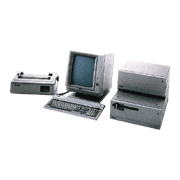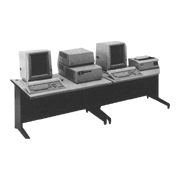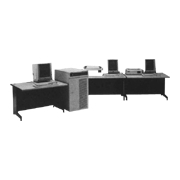Published on Jun. 1, 2006
Last updated on Jun. 22, 2023
This was a desk-top UNIX computer for science and engineering, marketed by Toshiba in 1982.
This machine incorporated Japanese language functionality while retaining the structure of AT&T's UNIX version 7 (later called "UNIX System III"), and was the pioneer of Japanese language UNIX. As a science and engineering computer, it was equipped with graphics processing capability, and also provided support for instrumentation via GP-IB and RS-232C interfaces. At the time, the CRT was unique, and A4 size graphics could be displayed using a 15-inch vertical CRT. The CPU was the T-88000, which was based on 16-bit SOS (Si On Sapphire) technology developed by Toshiba. Functionality was later enhanced in the UX-300F and UX-300FII, and upgrading to 32-bits was achieved in the UX-700. Toshiba also developed the UX-400 employing the M68020 general-purpose processor. With these additions, the series was completed.
| UX-300FII | UX-400 | UX-700 | |
|---|---|---|---|
| CPU | T-88000 (16MHz/16bit) | MC68020 (16.7MHz/32bit) | Microprogram control (32bit) |
| COPROCESSOR | none | MC68881 | High-speed arithmetic hardware optional |
| Main memory capacity | 1MB | 2-8MB | 1-4MB |
| Magnetic disk | 5.25-inch (46MB) | 5.25-inch (68MB) | 8-inch (92MB or 132MB) |
| Max. of 2 units connectable | Max. of 2 units connectable | Max. of 2 units connectable | |
| Floppy disk | 8-inch (1MB) | 8-inch(1MB) | 8-inch (1MB) |
| Parallel interface | GP-IB (1port) | GP-IB (2port) | GP-IB (2port) |
| Serial interface | RS-232C(2-8port) | RS-232C, RS-422 (12port) | RS-232C, RS-422 (16port) |
| Magnetic tape | Cartridge tape (30MB) | Cartridge tape (30MB) | Cartridge tape (30MB), Open reel tape |
| Dimensions (WxHxD) (mm) |
420x175x575 | 300x600x700 | 500x900x750 |




